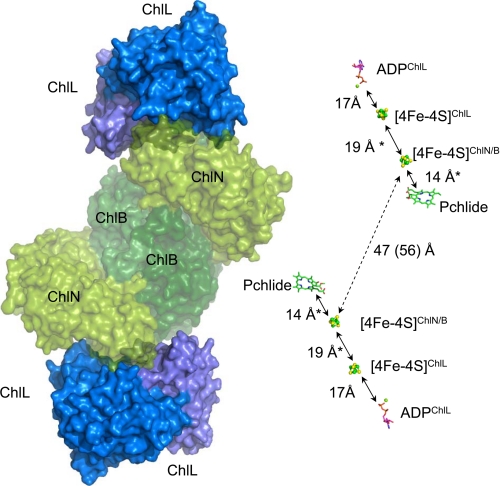FIGURE 7.
Model of the complete hetero-octameric DPOR and distance between cofactors. Left, a qualitative, theoretical model of the complete DPOR was created by combining the heterotetrameric (ChlN/ChlB)2 core complex from T. elongatus (this study) and ChlL2 from R. sphaeroides (PDB code 3FWY) (16), based on the crystal structure of hetero-octameric nitrogenase (PDB code 1G21) (54). ChlN (ChlN′) and ChlB (ChlB′) are shown in shades of green (partly transparent), ChlL2 is shown in shades of blue. Note the good surface complementarity between the subcomplexes. Right, the cofactors and the substrate of DPOR derived from the models on the left and Fig. 5 are shown in stick or ball-and-stick representation. Edge-to-edge distances are indicated in Angstroms, and distances from theoretical models are indicated by asterisks.

